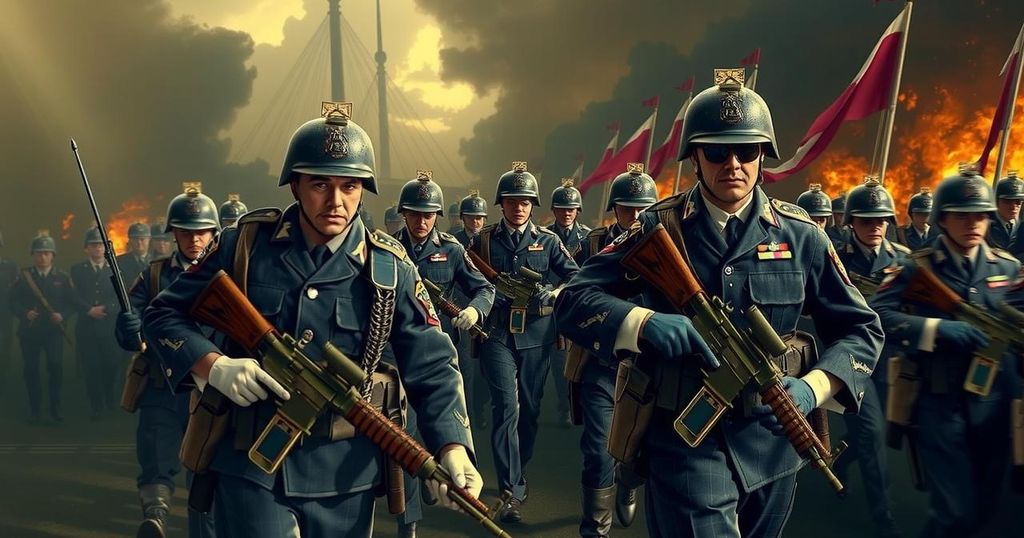Understanding Martial Law: Historical Cases and Implications
Martial law, a temporary state of military governance, is often manipulated by regimes to suppress dissent and violate civil liberties. Key instances of its declaration include the American Civil War, Nazi Germany, Hawaii during WWII, the Philippines under Ferdinand Marcos, and the Tiananmen Square protests in China, showcasing the dual-edged nature of this power.
Martial law serves as a temporary military governance during emergencies, such as natural disasters, foreign invasions, or civil unrest. However, its application has often been manipulated by both democratic and authoritarian regimes as a means to suppress dissent or maintain control over political opposition. The practice, which theoretically preserves constitutional rights, frequently results in the violation of civil liberties and due process, as illustrated by notable instances throughout history.
Martial law is derived from the term “martial,” relating to military affairs, originating from Mars, the Roman god of war. It involves the transfer of authority from civilian governance to military command, encompassing emergency response, law enforcement, and judicial functions. Despite its intended temporary nature, instances of martial law have showcased its potential for misuse as a tactic for political repression.
Five significant declarations of martial law include: 1. The American Civil War (1862-1866), where President Abraham Lincoln employed martial law extensively, especially in border states, leading to military tribunals over civilian courts. The Supreme Court’s ruling in Ex parte Milligan (1866) later reinforced the limit of martial law to cases with no available civilian judicial system.
2. In Nazi Germany (1933-1945), Adolf Hitler exploited the Reichstag Fire to implement martial law that suspended fundamental civil liberties and laid the groundwork for a dictatorship, enabling widespread arrest and imprisonment without trial.
3. The situation in Hawaii (1941-1944) following the attack on Pearl Harbor exemplified prolonged martial law, where military authorities controlled civilian functions, culminating in the Supreme Court’s decision in Duncan v. Kahanamoku (1946) deeming the application unconstitutional after the immediate threat subsided.
4. Ferdinand Marcos declared martial law in the Philippines (1972-1981) to quell opposition as he sought to retain power. This led to a decade of oppression, where thousands were detained, tortured, and executed, culminating in the eventual overthrow of his regime.
5. The Tiananmen Square protests in China (1989) saw Premier Li Peng declare martial law in response to student demands for reforms. This resulted in a brutal military crackdown that left thousands dead, highlighting the extreme measures employed against peaceful dissent.
History attests to the dual-edged nature of martial law, serving essential functions during crises while posing significant threats to civil liberties and democratic institutions when abused. Attention to the balance between necessity and draconian enforcement remains critical.
Martial law has been a controversial topic throughout history, defined as a temporary imposition of military control during emergencies. It can derive from situations of civil disorder, war, or natural calamities. Understandably, martial law is expected to maintain order and ensure public safety. However, many governments have abused this power to silence opposition, infringe civil liberties, and sustain authoritarian rule, illustrating the historically fraught nature of martial law as a governmental tool.
The declarations of martial law in various contexts reveal the delicate balance between ensuring public order and protecting civil liberties. When wielded responsibly, martial law can provide necessary governance during crises; however, its historical misuse highlights the dangers of military authority over civilian rights. Each case examined demonstrates that vigilance against the potential for abuse is essential in the preservation of democratic principles and civil liberties.
Original Source: www.history.com








Post Comment